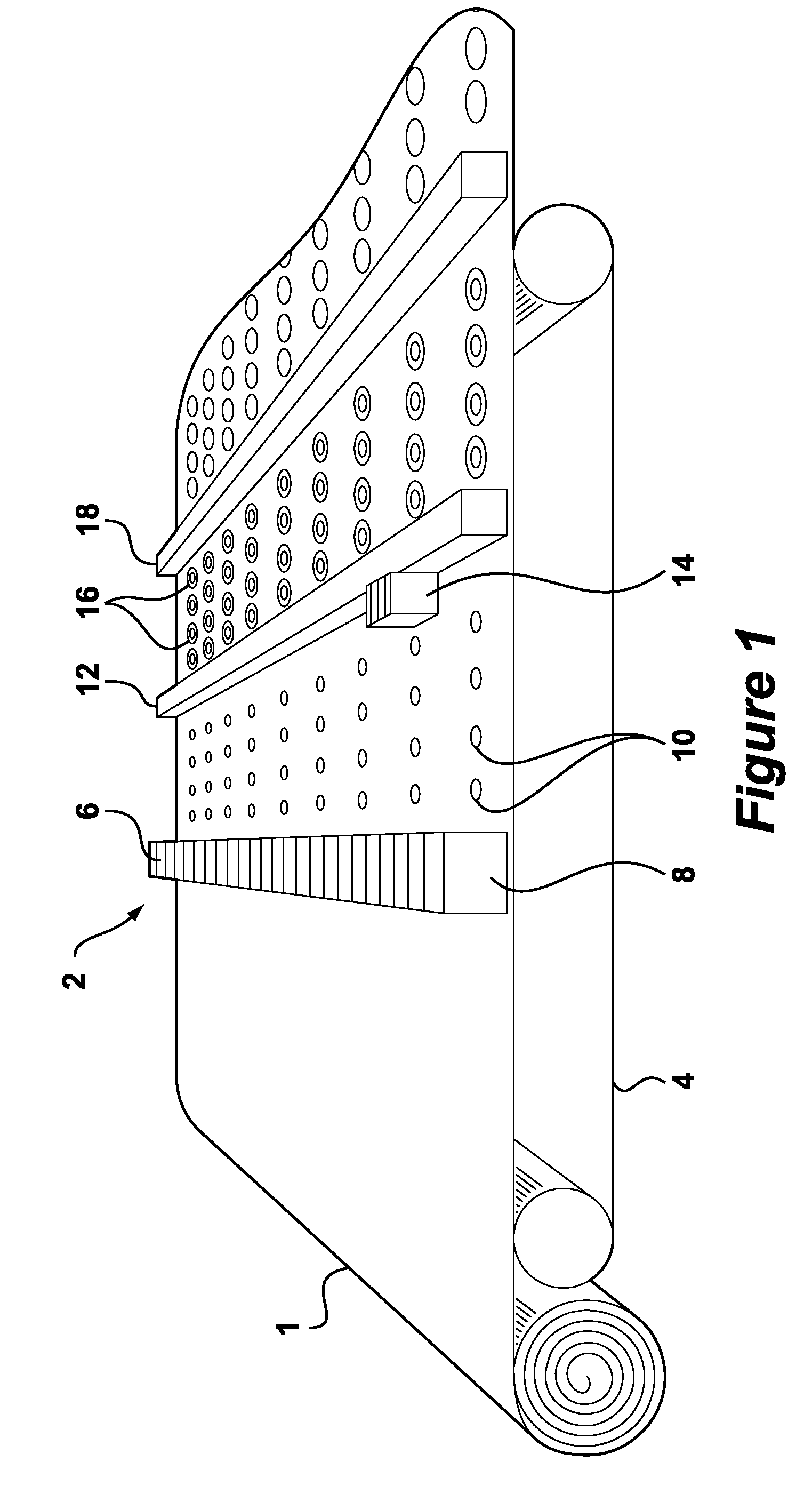Method of depositing materials on a textile substrate
a technology of textile substrate and material depositing, which is applied in the direction of coatings, instruments, transportation and packaging, etc., can solve the problems of not being generally free to stretch or distort, and achieve the effect of accurate encapsulation
- Summary
- Abstract
- Description
- Claims
- Application Information
AI Technical Summary
Benefits of technology
Problems solved by technology
Method used
Image
Examples
Embodiment Construction
[0048]The following is a description of certain embodiments of the invention, given by way of example only and with reference to the drawings. Referring to FIG. 1 shows schematically in perspective view a first example of a possible arrangement for depositing encapsulated functional droplets on a textile substrate. According to FIG. 1 there is shown a continuous roll of textile substrate 1 being fed to an upgrading device 2 according to the present invention. The textile substrate 1 is a standard cotton weave of a colour and weight suitable for the confection of men's shirts.
[0049]The substrate 1 is carried by conveyor 4 to a first beam 6 on which is arranged an array of 29 inkjet heads 8 of the continuous flow multilevel deflection type. Each inkjet head comprises a number (in this case 8) of individual nozzles (not shown).
[0050]The first beam 6 is supplied with a functional composition of an anti-microbial agent and deposits functional droplets 10 of the composition onto the texti...
PUM
| Property | Measurement | Unit |
|---|---|---|
| temperature | aaaaa | aaaaa |
| diameter | aaaaa | aaaaa |
| volumes | aaaaa | aaaaa |
Abstract
Description
Claims
Application Information
 Login to View More
Login to View More - R&D
- Intellectual Property
- Life Sciences
- Materials
- Tech Scout
- Unparalleled Data Quality
- Higher Quality Content
- 60% Fewer Hallucinations
Browse by: Latest US Patents, China's latest patents, Technical Efficacy Thesaurus, Application Domain, Technology Topic, Popular Technical Reports.
© 2025 PatSnap. All rights reserved.Legal|Privacy policy|Modern Slavery Act Transparency Statement|Sitemap|About US| Contact US: help@patsnap.com


